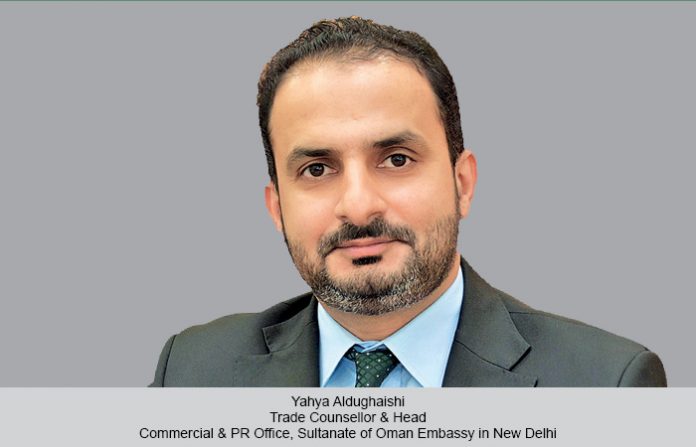With trade pacts, investment incentives, and plans to expand cargo capacity backed by modern ports and free zones, Oman is emerging as a global logistics hub, says Yahya Aldughaishi, Trade Counsellor, and Head, Commercial & PR Office, Sultanate of Oman Embassy in New Delhi.
CT Bureau
What opportunities do you see for Indian logistics companies to colla-borate or invest in Oman?
There are numerous investment opportunities for Indian logistics companies which exist in the free zones such as Khazaen and Sohar. In this context, we would like to highlight the Sohar Investment Forum, which will be held in Sohar between 4–5 February 2026, where hundreds of promising investment opportunities in the Sohar Free Zone will be showcased. We take this opportunity to invite Indian business leaders to participate in this forum.
These zones provide a conducive environment for development of logistics, light manufacturing, and cold-chain operations, and establishment of regional warehouses and distribution centers, which facilitate easy access to Gulf markets and Africa.
The Sultanate is opening its doors to investments in cold storage services for pharmaceuticals and medical equipment, digital 3PL and 4PL services, maritime shipping and ship registration under the Omani flag, in addition to infrastructure-related services such as project supply and heavy equipment transportation, among other diverse areas.
How is Oman positioning itself as a trade and logistics partner for India within the GCC and broader Middle East?
Oman is working to strengthen its position as a trade and logistics partner for India within the GCC and the broader Middle East region. Oman’s access to the Indian Ocean makes it a natural gateway for trade, and the Sultanate is advancing this role through a combination of major infrastructure projects, economic zones, investment incentives, and bilateral and FTAs. Oman is also developing its free zones, such as Khazaen, offering tax incentives, streamlined licensing procedures, and flexible ownership and leasing options for foreign investors. Oman provides secure customs corridors that aid in reducing clearance times and transportation costs.
The upcoming agreements between the two countries — the Comprehensive Economic Partnership Agreement (CEPA) and the Promotion and Protection of Investments Treaty (PIT) — are likely to lower tariffs, facilitate Indian exports, and open Omani markets to Indian goods and services, enhancing Oman’s role as India’s preferred trade gateway. Oman offers access to Gulf and East African markets supported by an integrated infrastructure network of ports, highways, and rail links, including the Sohar–Dubai railway connection.
How will Oman’s location along with global trade routes benefit Indian exporters and logistics providers?
Oman’s location is between the Indian Ocean and the Arabian Gulf, which makes it a natural gateway to the Gulf and East African markets. The presence of ports in locations, such as Duqm Port and Sohar Port in northern Oman, and Salalah Port in the south, allows them to serve as transit, storage, or re-export hubs.
The diversity of the Sultanate’s ports enhances operational flexibility and reduces logistical risks by providing alternatives in case of disruptions or congestion on major routes, such as those that may occur in the Suez Canal. The direct integration between the ports and their associated free and special economic zones enables establishment of regional distribution centres or representative offices in these areas and provision of value-added services such as packaging, retail-specific labeling, and compliance services aligned with GCC standards.
With the rise in e-commerce, perishables, and pharma, how is Oman improving its cargo infra to support time-sensitive trade with India?
Oman aims to transform Muscat airport into a global air cargo hub, with plans to increase its capacity to 500,000 tons annually by 2040. This includes expanding cargo warehouses, improving integration with free zones such as Sohar, Duqm, and Salalah, and developing advanced digital systems to streamline operations and reduce bureaucracy.
What message would you like to convey to Indian stakeholders exploring opportunities in Oman?
Oman serves as a gateway to the markets of the Gulf, East Africa, and Europe, featuring ports such as Duqm, Sohar, and Salalah, along with an integrated logistics infrastructure that includes free zones and advanced economic regions. The govt offers clear investment incentives and streamlined procedures for trade and transport, alongside plans to expand air and sea cargo capacities, connecting them to global supply chains.















